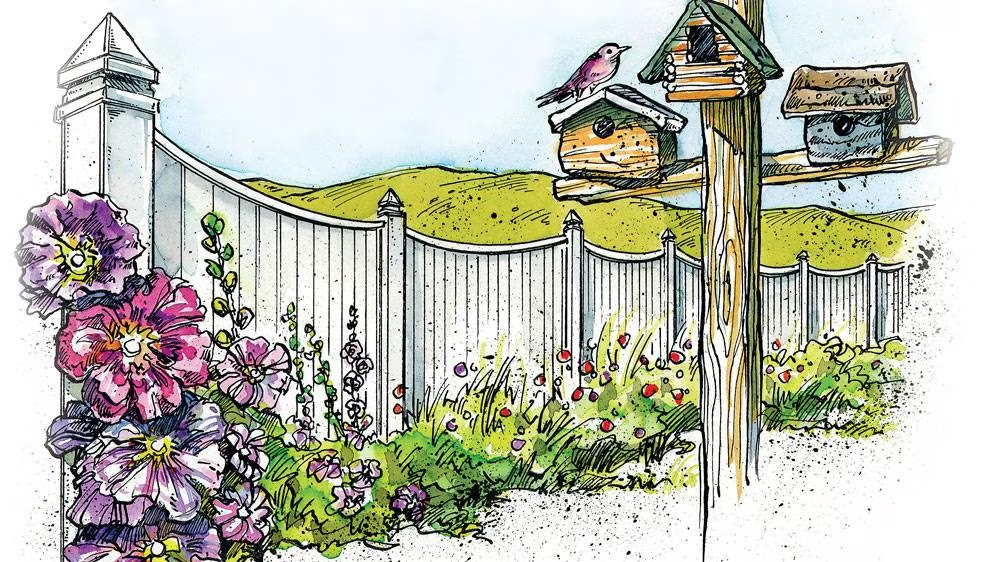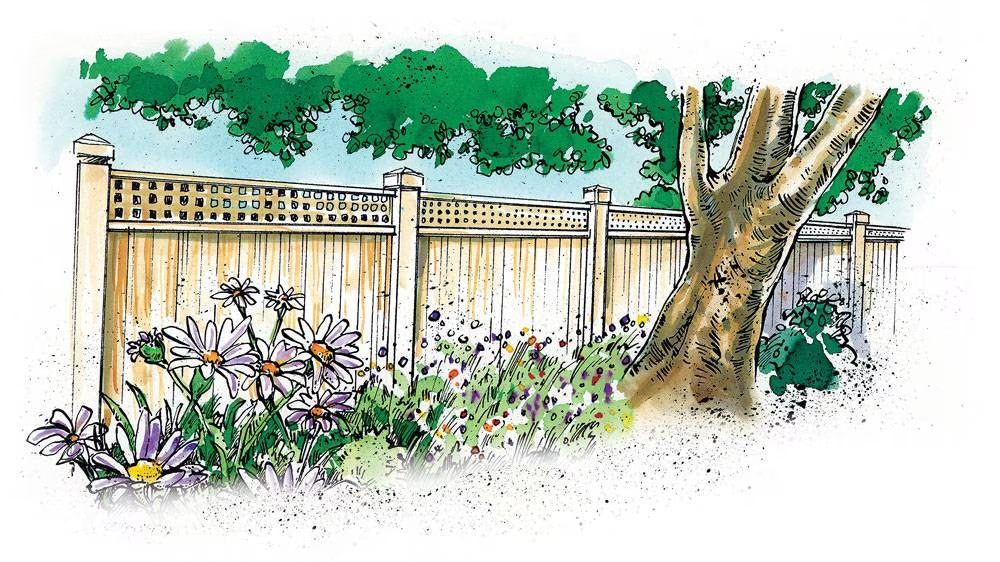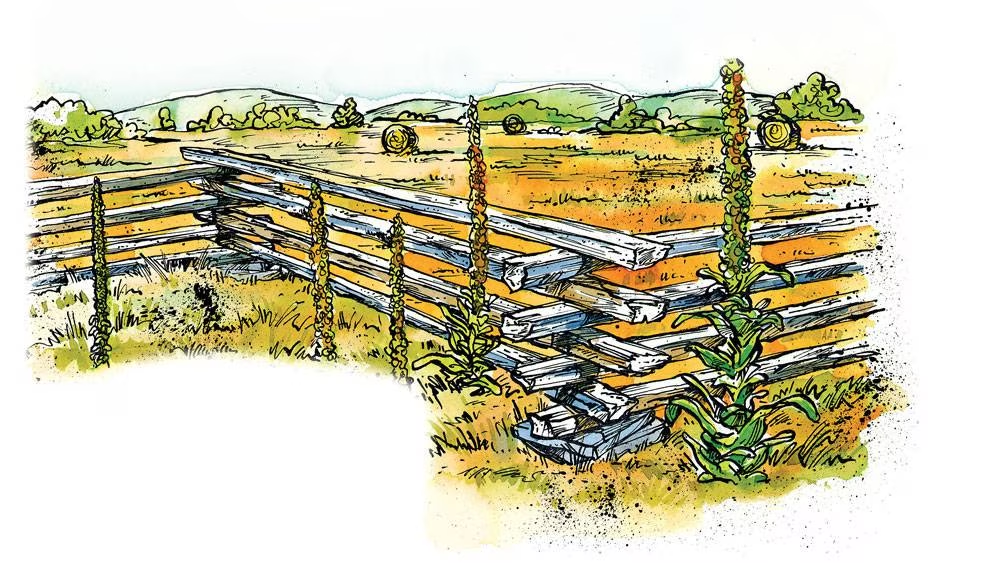Although there’s nothing quite like a grand, glorious sweep of green lawn, there’s also much to be said for those smaller picturesque areas tucked in with a fence. Maybe that’s a “Secret Garden” style swath of flower beds, an area that has pavers and seating for entertaining or a trouble-free way to keep your pets from wandering off. Whatever your goal, fencing can be an attractive part of any log or timber home landscape. Here are some tips to keep in mind:
Consider the material first.
A breadth of options exist from vinyl to metal but Keith Hersey, a sales associate with the fencing division of Katahdin Cedar Log Homes, says wooden fences tend to be most popular for log and timber frame homes since they complement the look of the structure. For example, Katahdin uses larger cedar trees for construction, then turns smaller wood segments into fencing. You can integrate other natural elements, too, like large stones and privacy hedges, so you’re not looking at long stretches of empty fence.
Holes or no holes?
If you want to set boundaries on the property but appreciate the option of moving the fence within a few years, consider stacked, maintenance-free border fences that use rails. These sit on patio blocks, so the wood doesn’t touch the ground.
Plan with a purpose.
If you’re just setting an area apart as a way to highlight its visual appeal — such as a garden with a pond — a smaller ornamental fence is best, since it will allow you to see that space from anywhere. But if you really want to create a strong boundary with limited sight lines — for example, blocking the view of the house from the road — then you’ll likely want a taller privacy fence with interlocking tongue-and-groove panels.
Weathered, rustic or elegant?
The style of the fence and its finish should match the overall feel of your property. Although they’re all comprised of wood, there’s a considerable difference between rustic split-rail fences, sweet little weathered-style picket fences and finished wood with elegant swooping panels like scallop fences.
Be consistent.
You love all the fence styles, so why not put multiple types on your property? For the same reason that you probably wouldn’t decorate each room in your home in a totally different style from the others. Fencing should be aesthetically pleasing but not dominant in your landscape. When you mix styles, it takes away from the cohesion of a property’s look. Skip the buffet approach and stick to one style instead.





_11868_2022-05-19_15-15-1280x720.avif)











